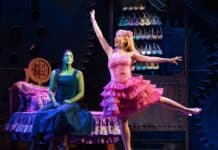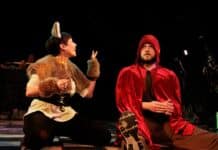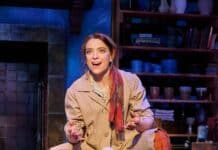GALA Hispanic Theatre’s annual Flamenco Festival is always at treat for the eyes and ears — but perhaps especially for the heart. This year was the 20th anniversary of the Festival, and its three programs, each produced a week apart, demonstrated a rich variety of expression and narratives.
SER.RANA (November 7–10, 2024)
This year’s program opened with Spanish dancer Sonia Franco from Spain, who also directed and choreographed herself, sharing the stage with only two singers (Rosa Linero and Cristina Soler), guitarist Alejandro Peralta, and percussionist Jonatan Pacheco (“El Pepi”) From her first entrance, she announced that we were in for something radical and boundary-breaking.
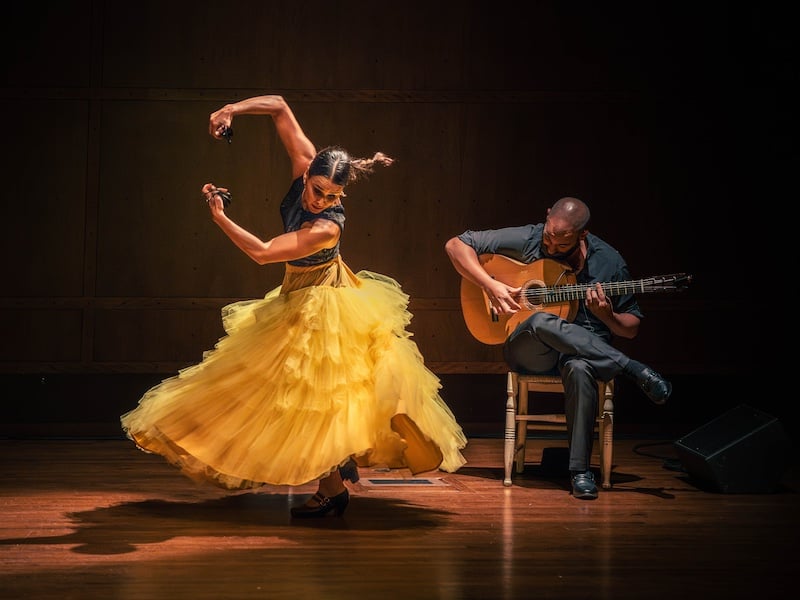
Franco blends wide-legged pliés and sharp low diagonals taken from modern dance and minimalist modern performance art with footwork and the fluid arm and wrist movements of traditional flamenco. Every gesture seemed to have been etched with a softer, less hiked-up line and intention than what is often served up in traditional intimate settings of tablaos. The program noted themes inspired by water, and indeed, this dancer’s lithe and curving body seemed to be redefining a new vocabulary and silhouette, like life-giving water itself.
The dancer knows her stuff. On the program, Franco displayed her command of the different subgenres of the traditional flamenco style, including braceo (arm port de bras), floreo (wrist and hand movements), zapateado (rapid staccato footwork), and, of course, bata de cola, the elegant manipulation involved in the very feminine form of dancing in a long ruffly dress with a long train.
Rosa Linero is an experienced and much sought-after singer from Spain who excels in the throaty earthiness of flamenco cante. Cristina Soler, with a slightly higher and lighter-placed voice, made for lovely duet singing between the two singers. Alejandro Peralta, longtime collaborator with Franco, added rich dimension with his Cadiz-influenced flamenco. Jonatan Pacheco is a most intuitive and exceptional crossover percussionist, comfortable in many genres of music and bringing the exploration of new aural textures to flamenco, much to the delight of the audience.
LO MEJOR DE EDWIN (November 15–17, 2024)
Last week we were welcomed into the DC “familia” of hometown favorite Edwin Aparicio in a program rightly entitled Lo Mejor de Edwin (The Best of Edwin). His huge local fan base was on hand to clap and shout out their appreciation.
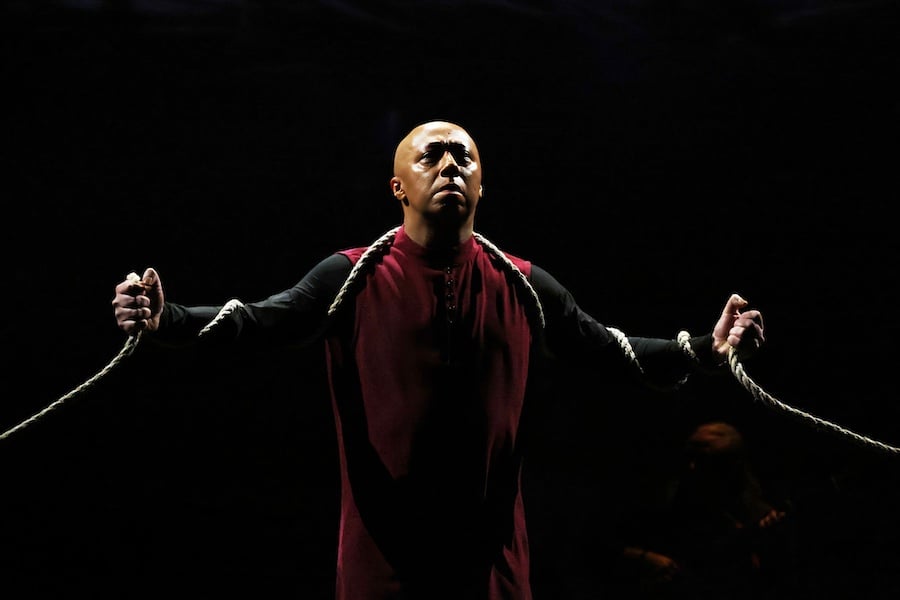
His local company joined him, including a good chorus of women, some long-time students. The real strength of this company, to my mind, however, is the male dancing. Edwin clearly supports the individual development and style of male dancing, as evidenced by the three men featured in this year’s program.
Edwin’s inspiration for making dances almost always is tied to his autobiography and specifically his journey as a refugee who escaped the poverty and violence of his native El Salvador to journey north and land in Mount Pleasant in the 1980s, only to be faced with fears, loneliness, and violence of a different kind.
Jonathan Pacheco is a young and fearless dancer and, in one of the most memorable choreographed dances of the festival, plays Edwin as a young street kid newly arrived in what was then a rough neighborhood during a time of upheaval in DC’s Hispanic community. Instead of clichés about gangs and bad kids, Aparicio approaches the subject with great compassion. He humanizes the gang experience to show it is often about survival and bonding to find identity. Instead of elegant, tight flamenco costuming, company dancers wore dark, relaxed street gear and shrouded themselves in hoodies. It perfectly fit the signature style of Pacheco, whose head snaps with sharp changes of focus conveyed the ever-alert wariness of an outsider trying to find his way in a new world. The narrative in the choreography is bold and sharp, and, even having seen it before, I found the work courageous and both heartbreaking and triumphant when, at the end, the young Edwin removes his hoodie to signify he leaves that life behind.
Principal dancer Norberto Chamizo Garrido is a willowy, graceful performer blessed with a classical male flamenco physique. But what I found even more extraordinary is how he and Edwin didn’t go down the road of dueling males strutting like macho roosters. Instead, the choreographer was interested in exploring male friendship and celebrating the special bonding that comes when old friends meet up after pursuing separate paths and genuinely can pick up from wherever they left off. All this was done in the language of classical flamenco. When the two men exit in a long diagonal upstage, their arms un-self-consciously around each other, I found that I had tears streaming down my cheeks.
Edwin’s pedigree as a master practitioner and teacher of flamenco is undeniable. He exudes confidence with every gesture and step. Even as a mature “statesman” of this style of dance, his zapateado is clean and rapid — dazzlingly so. But his two superpowers are in being able to express something personal and intimate and at the same time universal about the human condition through dance and his blend of the masculine and feminine aspects of flamenco.
INTIMATE FRIENDS OF FLAMENCO (November 22–23, 2024)
The third program for this year’s special was sponsored and curated by the Embassy of Spain. Intimate Friends of Flamenco featured three performers: a dancer, a female singer, and primarily a guitarist who also sang. While each of these artists was certainly accomplished technically, instead of the economy of means creating the desired effect of greater intimacy to bring us audience members in, the evening seemed more like a recital in a cavernous hall.
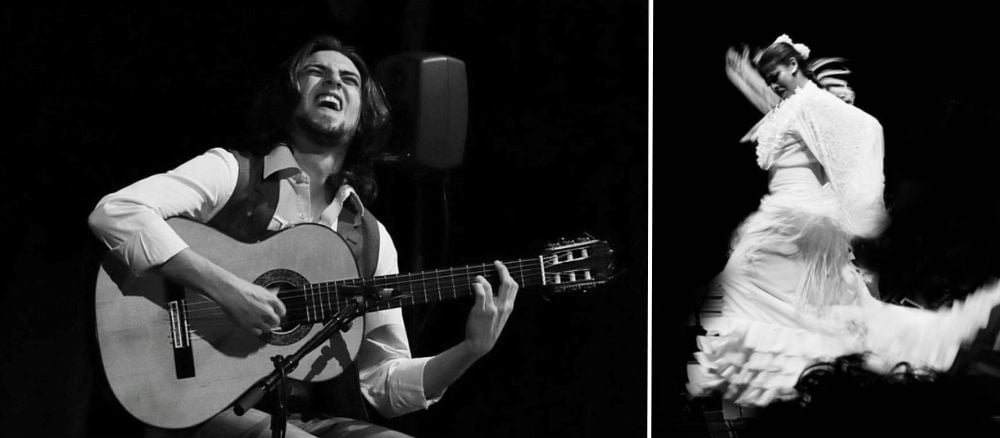
Singer Ana Brenes and guitarist Marc López have been friends since their teen years in the Catalan region of Spain and as university classmates. However, the narrative of their friendship was never clear in the telling. The blending of classical flamenco with a hip vibe of electronic music and even pop influences, especially by López on guitar, was interesting , but their approaches were not evenly matched. His was more introverted, even tentative, at the start, while hers was more blast and bluster. López grew more confident as the evening went on; in the second act especially, he performed some astonishing guitar licks, blending guitar styles.
Joining them was Flamenco dancer Montserrat Martinez, who hails originally from Cuba and is a gorgeous statuesque performer with strong arms, sinuous back, and zapateo-clacking footwork. I especially reveled in a dance that started with her completely shrouded in a long dark mantilla looking like an old woman or perhaps even a wraith-like figure of death until she flipped the great long-fringed shawl and began twirling it.
All was fine until solo became duet and Martinez transferred the shawl onto Brenes’ shoulders, whereupon the singer stepped into a dancer’s role, but I kept thinking she was about to trip on the long fringe dragging on the ground. Instead of “Ole!” I wanted to shout, “Beware! Stay in your swim lane!”
That being said, the festival in its 20th year had much to recommend it, and if you have not experienced the art of flamenco, you must get GALA’s next year’s festival on your calendar. It’s an art form being transformed because of the wide diaspora that now represents the world of flamenco. GALA’s commitment to celebrate annually its different permutations and syntheses of the flamenco world is a great cultural contribution to our region. Aplauso!
As Edwin Aparicio is often quoted saying, “Flamenco saved me.” Maybe flamenco can save all of us. Indeed, we need its passion, courage, compassion, and its sense of holding each other in community. The world is a dangerous mess, y’all.
The 20th Annual International Fuego Flamenco Festival played November 7 to 23, 2024, at GALA Hispanic Theatre, 3333 14th Street NW, Washington, DC.

